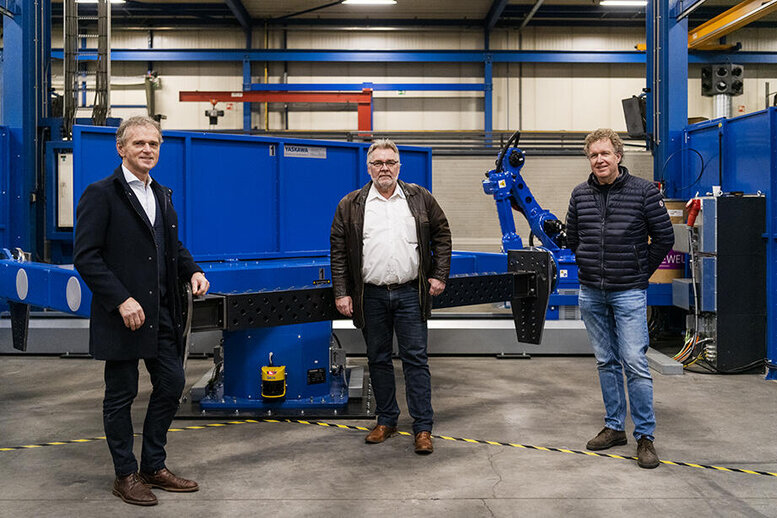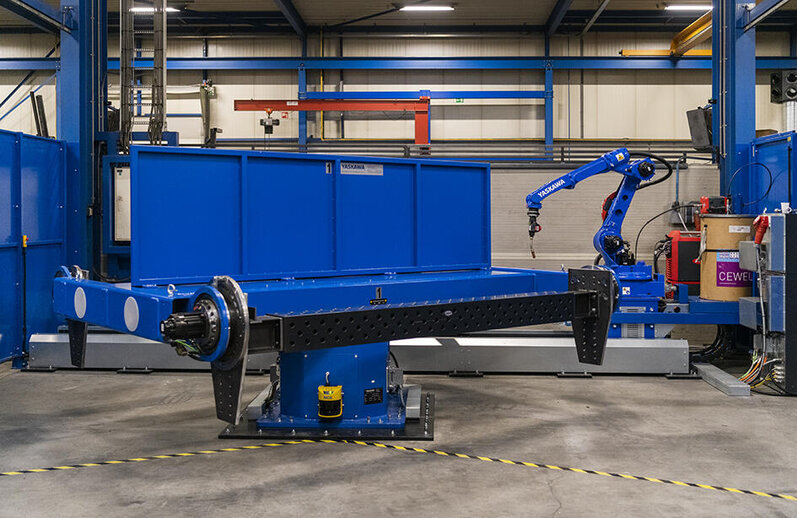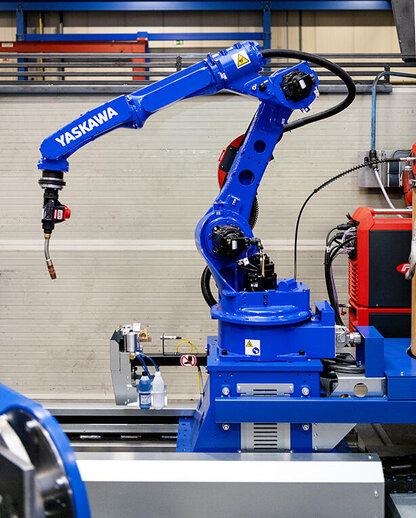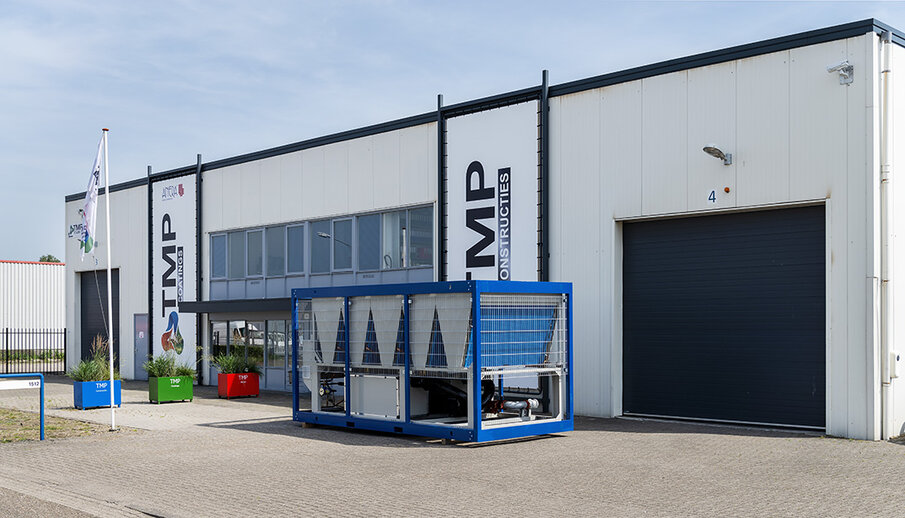Notre gamme de robots industriels à grande vitesse, à la pointe de la technologie, compte plus d'une centaine de modèles pour répondre à tout type d'application. Elle comprend des robots spécifiques à forte capacité, à portée étendue, des robots 7 axes extrêmement agiles, des robots double bras à 15 axes ou encore des cobots.
More continuity and greater range with Yaskawa welding robot
Five years ago, the wish for a welding robot arose at TMP Constructies in Waalwijk. The work of the company, a specialist in light construction work, consists mainly of 60% serial work and 40% project-based assignments. For that 60%, TMP was looking for a way to make welding easier. “We were also a bit unfamiliar with a welding robot: what can you do with it, what numbers do you need? So we started to delve into it until we finally made the decision,” says Herbert van der Stelt, Technical Commercial Director at the TMP Group.
A lot of serial work
The TMP Group consists of 3 divisions in total. TMP Metaalprodukten specializes in cutting, punching, laser cutting, bending, rolling and punching sheet material in steel, aluminum and stainless steel in various thicknesses. There is a machine park with laser machines and press brakes, especially for processing thinner sheet material up to a thickness of 6 mm. The TMP Coatings division is located at a second location, where they can apply the finishing touch to metal products. With this powder coating line, TMP can apply coating in-house. TMP Constructies is located at the same location, where the welding robot is installed. Light construction parts are produced here, the smaller construction work. Among other things, TMP Constructies produces supports for playground equipment, stairs for water slides, a lot of supports for mezzanine floors, stairs, railings, beams. That is the core business and it consists of a lot of serial work. Products such as column heads and handrail columns are now all welded with the Yaskawa welding robot.
Of course, manual welders are still employed, their own staff and, if necessary, an employment agency is used. “The problem for us in getting good staff is the compilers. Much of our work is difficult to put together,” says van der Stelt. “You can program a robot to make a good weld, putting something together is a different story, take a spiral staircase, for example. Putting these together requires a lot of craftsmanship and for this it is becoming increasingly difficult to find good people”.
Different form of work
Together with hired people , more than 45 people work at TMP . People who did the work that the welding robot does now weld the other products. “We employ no one less,” says van der Stelt. “Some people in the workshop were afraid they would lose their jobs, but we told them, 'That's not how a welding robot works.' A lot of people think that, but someone has to feed and operate that robot too. It has become a different form of work. We had so much work that we sometimes had to cancel work and now we just take that on. So it just brought us more.”
The company has since experienced that a welding robot provides much more continuity. For example, a column head contains 24 welds and with manual welding, a weld is sometimes forgotten. With a robot you no longer have this problem, which means that the quality, which TMP must guarantee, becomes much more constant. The welding robot has been operational since the beginning of this year, the first half of which was in the construction phase with the aim of being fully deployed from the autumn, when all the molds were ready, which was also successful.
Much greater reach
The robot is very easy to program for TMP's small series products because it stands on a rail. “You program the product and it moves 500 mm and does the same trick again. You can simply have four or five products welded in succession, which is why we opted for the rail. As a result, the reach is much greater,” says van der Stelt.
The purchase of the welding robot is certainly not the only automation that has been implemented at TMP Constructies. There are also two CNC laser machines and a CNC punching machine, which run during the night. A CNC milling machine and a CNC drilling line are also part of the machine park. TMP Coatings has a robot-controlled powder coating installation. Van der Stelt: “We are automating as much as possible.”
Impressive combination
The arrival of the welding robot was mainly about continuity. “Even a welder who can weld very well and quickly can never compete with a robot, it just looks very slick.” The decisive factors in choosing a Yaskawa robot were in particular the input of account manager Kor Blijenberg and the brand name Yaskawa together with the Fronius welding source, which all together formed an impressive combination. It was also a bit of a feeling issue. “It's a certain feeling you have about it. Both I and the owner of TMP are sensitive people. We read a lot about it and with the person who came there was just a certain click. We have not been disappointed in that.”
About the installation…
The installation consists of an AR2010 Yaskawa Motoman welding robot which is mounted on a carriage with a synchronously controlled travel path of 5,150 mm. Two work zones have been set up in the working area of the robot created in this way. One zone is equipped with a synchronously driven horizontal manipulator type RWV2 with two workstations. Each workstation is in turn equipped with a synchronously controlled horizontal external robot axis with a clamping length of 3,000 mm and a turning radius of 1,200 mm. In the second zone, the robot must be “parked” in order for the pre-turntable to pre-run a workstation over the track. The RWV2 manipulator is equipped with a central baffle which also serves as a welding light shield.
It is equipped with a Fronius TPS400i CMT power source which is placed on a riding platform behind the robot. This configuration is standard equipped with a touch sensor over the welding wire. This power source is controlled via the teach pendant of the robot controller via the WeldCom II interface. This power source is suitable for welding both steel and aluminum.























